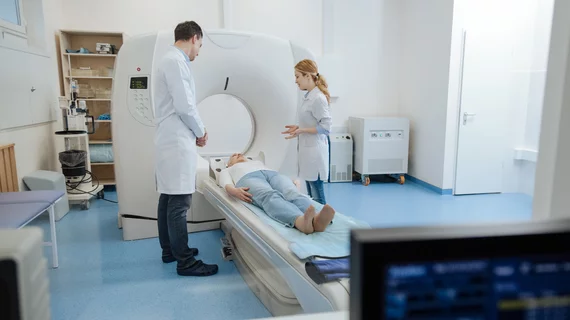Gadolinium contrast helps radiologists’ confidence with neuroblastomas on MRI, but rarely alters care
Gadolinium contrast may not be necessary for certain pediatric patients undergoing follow-up MRI for neuroblastomas, according to research published Friday.
While using intravenous agents did bolster radiologists’ confidence when interpreting lesions, it rarely altered patient management. Out of more than 100 individuals, contrast impacted provider confidence in 23 cases. But only one lesion was missed due to a lack of IV material, researchers explained June 18 in Clinical Imaging.
“The larger impact that administration of gadolinium-based contrast agent appears to have is on the radiologist's confidence,” Gerald G. Behr, MD, with Memorial Sloan Kettering Cancer Center’s Department of Radiology and colleagues wrote. “We recommend considering performing post-treatment abdominal MRI without contrast in select children with a history of neuroblastoma,” they added later.
Many young patients previously treated for malignancy undergo multiple follow-up MRI exams, with contrast doses adding up over time. And given the ongoing debate surrounding the long-term effects of gadolinium deposition, Behr and co-authors sought to determine if using this material is necessary.
They retrospectively reviewed 110 children who underwent some 450 abdominal MRI exams enhanced with gadolinium agents. One radiologist reviewed scans for the presence of a tumor, both before and after contrast administration.
Overall, 65 patients were diagnosed with 125 total lesions, excluding those in the liver, spleen and bones. Only 1 lesion or 0.8% was completely missed without the use of contrast.
It’s still “imperative” patients undergo at least a baseline study with contrast, the authors noted, but performing follow-up exams without it may be a winning approach.
“This imaging strategy can potentially substantially decrease the necessity for multiple doses of gadolinium-based contrast agents in many patients who are undergoing follow-up or surveillance studies and not likely to have a new mass,” Behr and colleagues concluded.
Click here to read the entire study.

